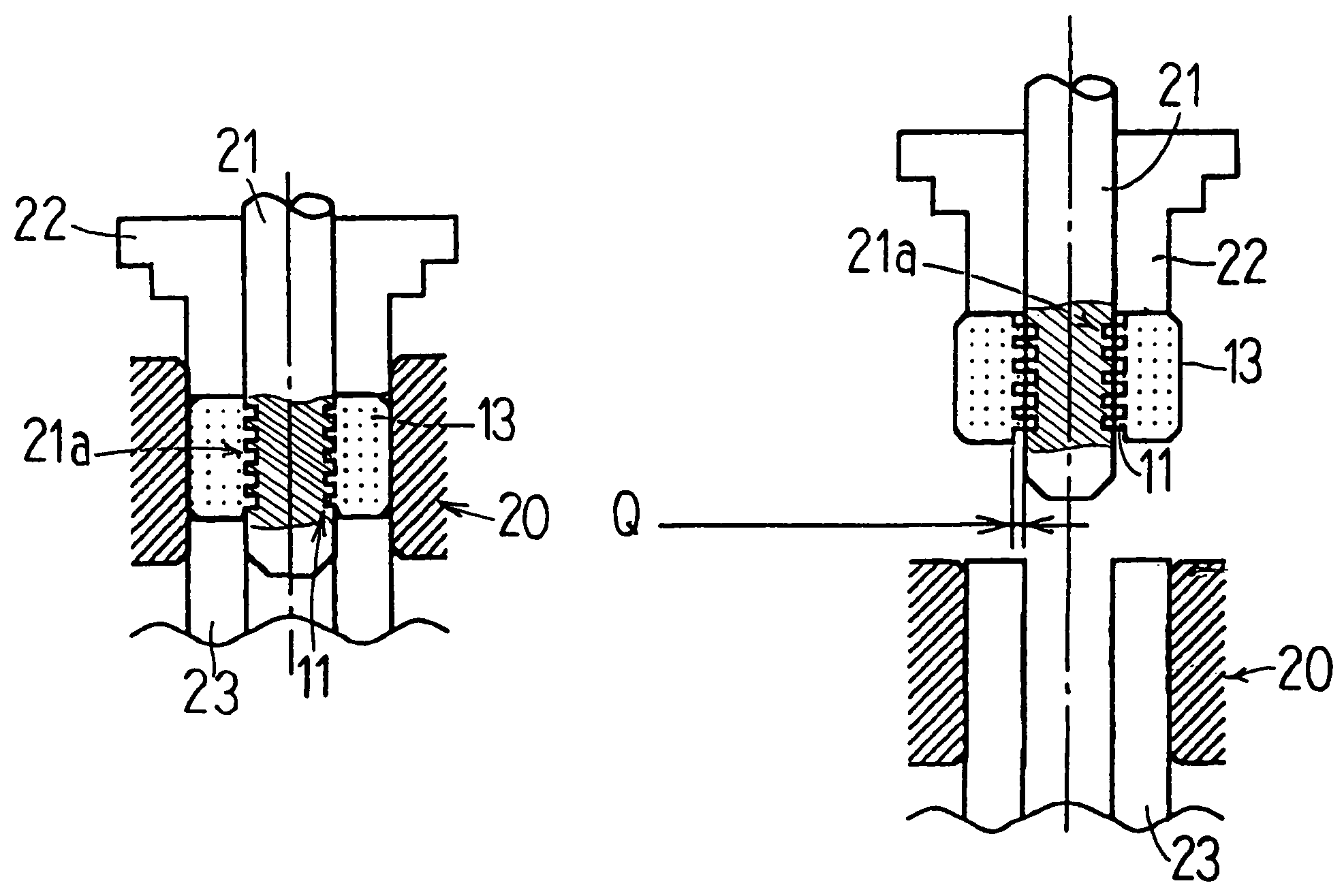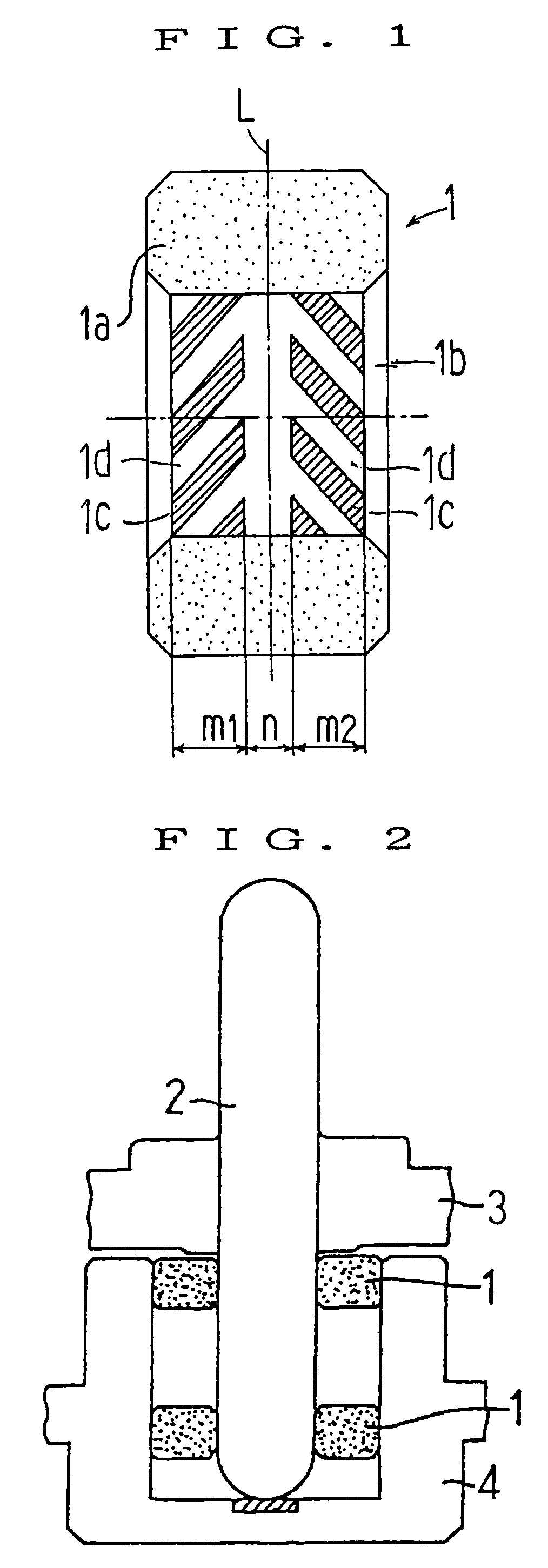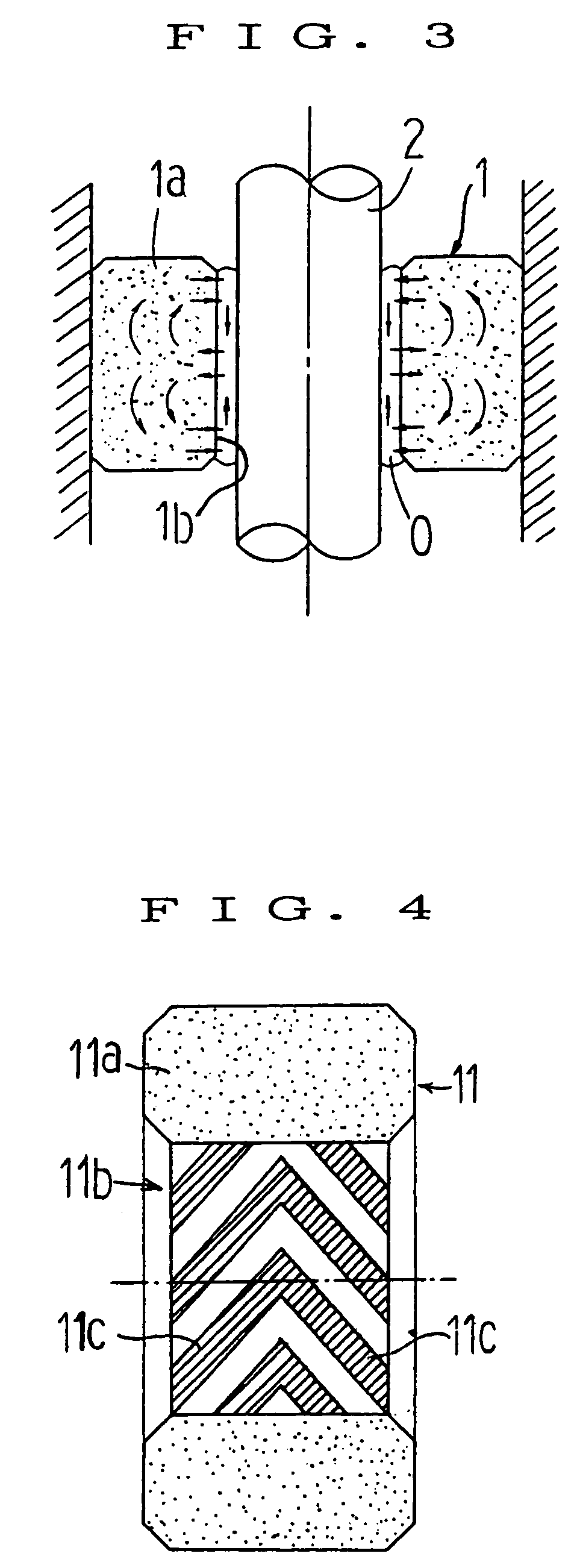Hydrodynamic type porous oil-impregnated bearing
a technology of porous oil and bearings, which is applied in the direction of bearings, shafts and bearings, rotary bearings, etc., can solve the problems of accelerating oxidative deterioration of oil, affecting the bearing life, so as to improve the effect of lubricating oil film formation, the effect of reducing the deterioration of oil
- Summary
- Abstract
- Description
- Claims
- Application Information
AI Technical Summary
Benefits of technology
Problems solved by technology
Method used
Image
Examples
Embodiment Construction
[0043]Embodiments of the present invention will now be described.
[0044]FIG. 1 shows by way of example an embodiment of a hydrodynamic type porous oil-impregnated bearing. This hydrodynamic type porous oil-impregnated bearing 1 is used, for example, in connection with a scanner motor for a laser beam printer shown in FIG. 2, to support a spindle shaft 2 for rotation with respect to a housing 4, in a non-contact manner, the spindle shaft 2 being rotated at high speed by magnetic excitation force between a rotor 3 and a stator.
[0045]The porous oil-impregnated bearing 1 comprises a bearing body 1a made of a porous material, e.g., a sintered metal containing copper or iron, or both as a main component, and oil retained in the pores of the bearing body 1a by impregnation with lubricating oil or lubricating grease. The bearing body preferably contains copper in 20–95 wt %, and has density of 6.4–7.2 g / cm3.
[0046]The inner peripheral surface of the bearing body 1a is formed with a bearing su...
PUM
| Property | Measurement | Unit |
|---|---|---|
| melting point | aaaaa | aaaaa |
| temperature | aaaaa | aaaaa |
| size | aaaaa | aaaaa |
Abstract
Description
Claims
Application Information
 Login to View More
Login to View More - R&D
- Intellectual Property
- Life Sciences
- Materials
- Tech Scout
- Unparalleled Data Quality
- Higher Quality Content
- 60% Fewer Hallucinations
Browse by: Latest US Patents, China's latest patents, Technical Efficacy Thesaurus, Application Domain, Technology Topic, Popular Technical Reports.
© 2025 PatSnap. All rights reserved.Legal|Privacy policy|Modern Slavery Act Transparency Statement|Sitemap|About US| Contact US: help@patsnap.com



